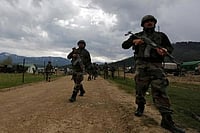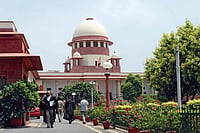The India Meteorological Department on Thursday declared a heatwave sweeping most of Northern, Northwest, and Central India, affecting Delhi, Haryana, parts of Himachal Pradesh, Rajasthan, Uttar Pradesh, among other states in the region.
The heatwave spell is likely to continue over Northwest, Central, and West India during the next four-five days, said IMD in a statement. However, the intensity of heatwavel is expected to reduce from Friday, but the relief is expected to be moderate as IMD’s forecast for April suggests above-than-normal temperature in most of North India.
The maximum temperatures that are above the normal range by 4-8⁰C puts the vulnerable sections such as infants, elderly, and people exposed to sun such as vendors, at risk of heat-related health issues such as dehydration and heat strokes.
Here is all you need to know about heatwave, what's causing it, its risks, and tips to safeguards yourself.
What is a heatwave?
An area is under a heatwave when its maximum temperature is above the normal range by 4.5-6 degrees, according to IMD. A severe heatwave is declared when the maximum temperature is above the normal range by 6.4 degrees.
There is another criteria for heatwave based on actual temperature. A heatwave is declared when the temperature touches 45 degrees and a severe heatwave is declared when it touches 47.
March marks the beginning of the summer season, but the onset has been rather quick this year with little time for transition. One of the reasons cited is the lack of rainfall in the country so far.
What's causing the heatwave?
The continued persistence of a north-south low pressure pattern that forms over India during winters is one reason. Such a pattern forms over India when the La Nina phenomenon is occurring in the Pacific Ocean, according to experts quoted in Down To Earth.
During La Nina, surface waters of the Pacific Ocean along the western coast of South America undergo cooling. This affects the trade winds over these surface waters that carry this disturbance elsewhere. In India, La Nina is associated with winters and this persistence into summer is unexpected.
“The weird dust storm, the early deep depressions, one of which threatened to form a cyclone, and the heatwaves are all part of this weird persistence,” Raghu Murtugudde, a climate scientist at the University of Maryland, was quoted as saying in Down To Earth.
Radhu added that this phenomenon is combining with a warmer Arctic that’s sending atmospheric waves down. The intersection of the two is a byproduct of global warming.
How to protect yourself in the heatwave?
You should keep drinking water and other fluids such as lassi, lemonade, buttermilk, and rice water to keep yourself properly hydrated, according to IMD, which adds that you should take such fluids even if you are not thirsty as the purpose is to keep yourself properly, not necessarily to quench thirst.
Here are some more precautions:
- Avoid unnecessary exposure to the sun. If you have to step out, try to step out in cooler evenings.
- Wear loose, lightweight, light-coloured, cotton clothes and apply appropriate sunscreen.
- Cover your head with light-coloured scarves, caps, or umbrellas.
- Never leave anyone, including pets, in a parked car as it tends to heat up.
- Always keep a water bottle with yourself.


























